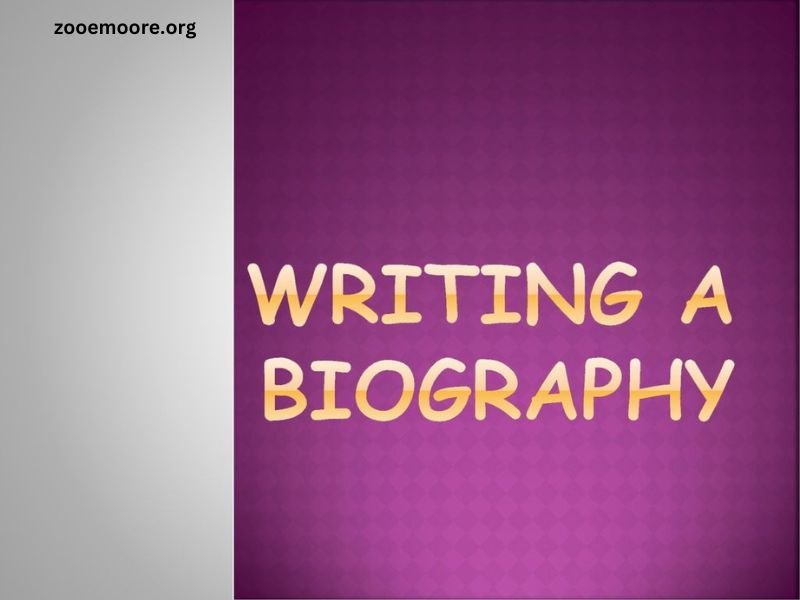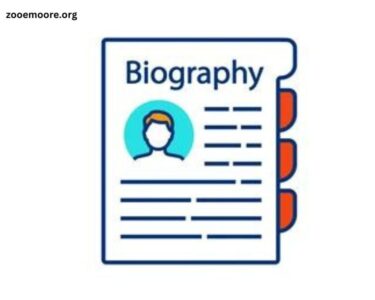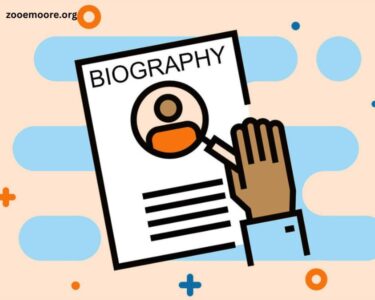Writing a biography about yourself can be a deeply introspective and enlightening process. Whether you’re crafting a professional bio for your LinkedIn profile, a personal bio for a social media page, or a more detailed autobiography, the approach you take will shape how others perceive you and how you reflect on your own life. Here’s a comprehensive guide to help you write a compelling biography about yourself.
How to Write a Biography About Yourself
Before you begin writing, clarify the purpose of your biography. Are you aiming to provide a brief overview of your professional achievements, share your life story with family and friends, or create an in-depth autobiography? The purpose will influence the tone, length, and content of your biography.
- Professional Bio: This type is usually concise, focusing on career highlights, skills, and achievements. It’s commonly used on websites, LinkedIn profiles, and in professional networking.
- Personal Bio: This bio may include personal interests, family background, and key life events. It’s often used for social media, personal websites, and in contexts where a more personal touch is appropriate.
- Autobiography: This is a detailed account of your entire life, offering an in-depth look at your experiences, challenges, and milestones. It’s often a longer piece that explores themes and insights.
Gathering Information
Start by collecting information about yourself. This includes:
- Personal Details: Birth date, place of birth, family background.
- Education: Schools attended, degrees earned, special achievements.
- Career: Jobs held, significant projects, career milestones.
- Achievements: Awards, recognitions, notable accomplishments.
- Personal Experiences: Significant life events, hobbies, passions.
- Challenges: Obstacles faced and how you overcame them.
Create a timeline or list of these details to help organize your thoughts.
Deciding on the Structure
The structure of your biography will depend on its purpose and length. Common structures include:
- Chronological: Start from the beginning of your life and move forward in time. This is suitable for autobiographies and detailed bios.
- Thematic: Focus on specific themes or aspects of your life, such as career achievements, personal growth, or challenges. This can work well for both professional and personal bios.
- Narrative: Weave your life story into a compelling narrative. This approach can be engaging and personal, making it suitable for autobiographies and personal bios.
Writing the Introduction
Your introduction should grab the reader’s attention and provide a brief overview of who you are. For a professional bio, include your current role and key achievements. For a personal or autobiographical bio, you might start with a significant life event or an interesting anecdote that sets the stage for your story.
Example for Professional Bio: “John Doe is a seasoned marketing executive with over 20 years of experience in developing innovative strategies for Fortune 500 companies. Known for his expertise in digital marketing and data analytics, John has played a pivotal role in driving business growth and enhancing brand visibility.”
Example for Personal Bio: “From a small town in rural Iowa to the bustling streets of New York City, Jane Smith’s journey is a testament to the power of perseverance and passion. With a love for storytelling and a knack for creative problem-solving, Jane has transformed her dreams into a thriving career in publishing.”
Writing the Body
In the body of your biography, expand on the key points you’ve identified. For a professional bio, delve into your career achievements, skills, and contributions. For a personal or autobiographical bio, describe significant life events, personal growth, and insights gained.
- Education and Early Life: Discuss your background, education, and formative experiences. This helps provide context and shows how your early life influenced your career or personal development.
- Career and Achievements: Highlight your professional journey, including major accomplishments, roles, and contributions. Use specific examples and metrics to demonstrate your impact.
- Personal Interests and Experiences: Share your hobbies, interests, and personal experiences that have shaped who you are. This adds a human touch and makes your biography more relatable.
- Challenges and Overcoming Obstacles: Describe any significant challenges you’ve faced and how you overcame them. This can add depth to your story and showcase your resilience.
Example for Professional Bio: “John Doe began his career as a junior marketing analyst at XYZ Corporation, where he quickly made a name for himself with his innovative approach to market research. Over the years, John has led successful campaigns that increased brand engagement by 40% and has been instrumental in the launch of several high-profile products.”
Example for Personal Bio: “Growing up in a small town, Jane Smith faced numerous challenges, from limited resources to skepticism about her aspirations. Despite these obstacles, Jane’s determination led her to achieve her dream of becoming a successful editor. Along the way, she found solace in writing, which became both a passion and a career.”
Incorporating Personal Insights
Incorporate personal insights and reflections to add depth to your biography. Share what you’ve learned from your experiences, how you’ve grown, and what motivates you. This can make your story more engaging and relatable.
Example for Personal Bio: “Jane Smith’s journey from a small town to a major city was not just a physical relocation but a profound personal transformation. Each challenge she faced taught her valuable lessons about resilience and creativity, which she now applies in her work and personal life.”
Editing and Refining
Once you’ve written your draft, take time to review and refine it. Check for clarity, coherence, and conciseness. Ensure that your biography flows smoothly and that your key points are effectively communicated.
- Proofreading: Look for spelling and grammatical errors. Consider having someone else read your biography to catch mistakes you might have missed.
- Feedback: Seek feedback from friends, family, or colleagues. They can provide valuable perspectives on how well your biography represents you.
- Consistency: Ensure that the tone and style of your biography align with its purpose. A professional bio should be formal and polished, while a personal bio can be more casual and conversational.
Final Touches
Add any final touches to enhance your biography:
- Photos: For personal and professional bios, including a high-quality photo can help make a positive impression.
- Contact Information: For professional bios, consider including contact information or links to your website or LinkedIn profile.
- Updates: Regularly update your biography to reflect new achievements, experiences, and changes in your career or personal life.
Example for Professional Bio with Final Touches: “John Doe is a respected leader in the marketing industry, known for his strategic vision and innovative approach. Connect with John on LinkedIn or visit his website to learn more about his work and insights.”
Example for Personal Bio with Final Touches: “Jane Smith’s journey is a testament to the power of passion and perseverance. Follow Jane’s blog for updates on her latest projects and personal reflections.”
Examples of Different Types of Biographies
Professional Biography: “Dr. Emily Roberts is a distinguished scientist specializing in environmental sustainability. With a Ph.D. from MIT and over 15 years of experience in the field, Dr. Roberts has published numerous research papers and received several prestigious awards for her work in combating climate change.”
Personal Biography: “Michael Johnson, a passionate gardener and amateur chef, enjoys sharing his love for homegrown produce through his popular blog. Michael’s culinary creations are inspired by his childhood memories of cooking with his grandmother, and he now teaches cooking classes in his local community.”
Autobiography Excerpt: “My life began in a small rural community, where the simplicity of everyday life was both comforting and limiting. As I grew older, I sought to explore beyond the confines of my hometown, driven by a curiosity that led me to the bustling city of Chicago. This journey of discovery, filled with both triumphs and trials, has shaped who I am today.”
Conclusion
Writing a biography about yourself is an opportunity to reflect on your experiences, achievements, and personal growth. By understanding the purpose, gathering relevant information, and following a structured approach, you can create a biography that authentically represents who you are. Whether it’s for professional purposes or personal reflection, a well-crafted biography can leave a lasting impression and provide valuable insights into your life’s journey.



